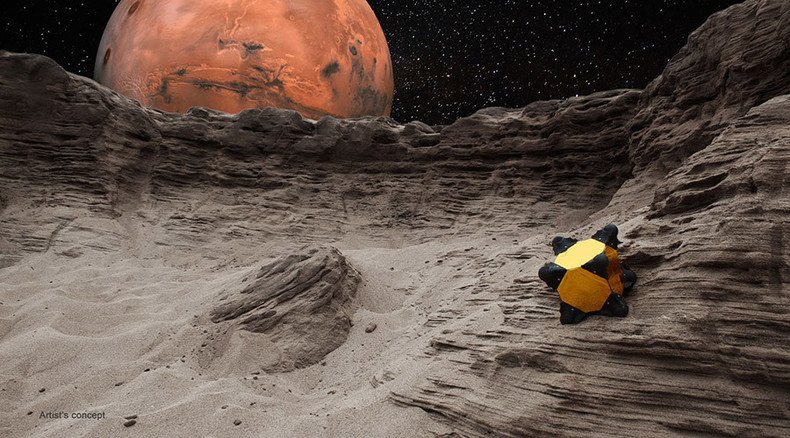NASA eyes deployment of ‘hopping hedgehogs’ on asteroids & comets

In its search for more efficient ways to study the surface of asteroids and comets, NASA has developed two prototype versions of a new robot, dubbed the Hedgehog, capable of hopping and maneuvering in the low gravitational pulls of of small celestial bodies.
Teams from NASA’s Jet Propulsion Laboratory (JPL), Stanford University, MIT, say that cube-shaped prototype creations can hop and tumble instead of rolling on wheels on the surface on bodies with low gravitational pull. This gives the Hedgehog a competitive advantage over conventional spacecraft designs, which are most likely to encounter difficulties when trying to land on the surface of comets or asteroids.
Currently two versions of the Hedgehog are being developed, one without external limbs and another with spikes on the surface, which could act as legs allowing for more movement. The prototypes move by spinning and stopping three internal flywheels using motors and brakes.
The JPL's 11 pound (five kilogram)version has eight spikes and three flywheels. These spikes on Hedgehog are also designed to be probes to sample the surface the robot is currently on. The Stanford prototype is slightly smaller and lighter, and it has shorter spikes. Additionally, the JPL’s version uses disc brakes while Stanford’s design uses friction belts.
“By controlling how you brake the flywheels, you can adjust Hedgehog’s hopping angle. The idea was to test the two braking systems and understand their advantages and disadvantages,” said Marco Pavone, leader of the Stanford team.
Hedgehog is controlled wirelessly using the same technology that controls NASA’s Curiosity. However, the new robot is less expensive to manufacture and deploy than Curiosity. The cube shape allows the robot to function no matter which direction it is facing. The robot is even designed to get out of a crater by lifting itself up using a spinning “tornado” technique.
The capabilities of the new Hedgehog prototypes were tested for microgravity in June on different materials that mimic a wide range of surfaces: sandy, rough and rocky, slippery and icy, and soft and crumbly.
“We demonstrated for the first time our Hedgehog prototypes performing controlled hopping and tumbling in comet-like environments,” said Robert Reid, lead engineer on the project at JPL.
NASA is now looking into increasing the Hedgehog’s autonomy and independence from instructions from Earth.












